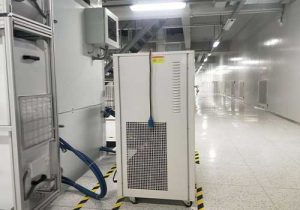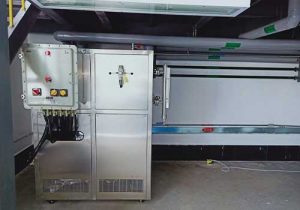hot and cold plate
Hot and Cold Plate: A Comprehensive Guide
Introduction
A hot and cold plate is an essential tool in laboratories and industrial settings, offering precise temperature control for heating or cooling samples, materials, or processes. These devices are widely used in scientific research, quality control, and production processes due to their versatility and reliability. This article explores the working principles, types, applications, and benefits of hot and cold plates, providing a detailed understanding of their role in modern temperature control.

Working Principles
Hot and cold plates operate by transferring heat to or from a surface, which is then used to heat or cool samples placed on it. The key principles include:
Heating Mechanism:
Heating elements embedded in the plate generate heat, which is transferred to the surface and then to the sample. Temperature control is achieved through thermostats or digital controllers.
Cooling Mechanism:
Cooling plates use thermoelectric modules or refrigeration systems to remove heat from the surface, lowering the temperature of the sample. Some models combine both heating and cooling functions in a single unit.
Types of Hot and Cold Plates
Standard Hot Plates:
These plates are designed for heating applications and are commonly used in laboratories for tasks such as boiling, evaporation, and sterilization.
Stirring Hot Plates:
These plates include a magnetic stirrer, allowing for simultaneous heating and mixing of liquids. They are ideal for chemical reactions and sample preparation.
Cold Plates:

Cold plates are used for cooling applications, such as maintaining low temperatures for sensitive samples or processes.
Combination Hot and Cold Plates:
These versatile plates can switch between heating and cooling modes, making them suitable for a wide range of applications.
Applications of Hot and Cold Plates
Chemistry:
Hot plates are used for heating reactions, boiling solvents, and evaporating liquids, while cold plates are used for cooling reactions and preserving samples.
Biology:
In biological research, hot plates are used for sterilizing equipment and preparing media, while cold plates are used for maintaining low temperatures for cell cultures and enzymes.
Food Science:
Hot plates are used for cooking and testing food samples, while cold plates are used for cooling and preserving food products.
Materials Testing:
Hot and cold plates are used in materials testing to study the effects of temperature on material properties, such as thermal conductivity and expansion.
Benefits of Hot and Cold Plates
Precise Temperature Control:
Hot and cold plates offer accurate temperature control, ensuring consistent and reliable results.
Versatility:
These devices can be used for a wide range of applications, from heating and cooling to mixing and stirring.
Compact Design:
Hot and cold plates are typically compact and portable, making them easy to use in various settings.
Energy Efficiency:

Modern hot and cold plates are designed to be energy-efficient, reducing operational costs and environmental impact.
Safety Considerations
Temperature Monitoring:
Always monitor the temperature to prevent overheating or overcooling, which can damage samples or equipment.
Proper Ventilation:
Ensure adequate ventilation to prevent the buildup of heat or fumes, especially when working with volatile substances.
Use of Protective Equipment:
Wear appropriate protective equipment, such as gloves and goggles, when handling hot or cold plates to prevent burns or frostbite.
Maintenance Tips
Regular Cleaning:
Clean the plate surface regularly to prevent contamination and ensure efficient heat transfer.
Inspection:
Periodically inspect the plate for signs of wear or damage, such as cracks or corrosion.
Calibration:
Calibrate the temperature control system regularly to maintain accuracy.
Factors to Consider When Selecting a Hot and Cold Plate
Temperature Range:
Choose a plate with a temperature range that meets your specific needs, whether for high-temperature heating or low-temperature cooling.
Uniformity:
Consider the temperature uniformity of the plate, especially for applications requiring consistent heating or cooling across the entire surface.
Control Mechanisms:
Look for plates with precise control mechanisms, such as digital controllers or programmable settings, for accurate temperature regulation.
Size and Capacity:
Select a plate with an appropriate size and capacity for your samples or processes, ensuring it can handle the required volume.
Conclusion
Hot and cold plates are indispensable tools in laboratories and industrial settings, offering precise temperature control for a wide range of applications. By understanding their working principles, types, and benefits, users can optimize their use of these devices for scientific research, quality control, and production processes. Safety considerations, regular maintenance, and careful selection ensure optimal performance and longevity, making hot and cold plates a valuable investment for any temperature control needs. Whether in chemistry, biology, food science, or materials testing, these versatile devices provide reliable and efficient heating and cooling solutions.
Related recommendations
Advantages of Air Cooled Chillers
1245Advantages of Air Cooled Chillers Configuration of air-cooled chillerAccording to the compressor, the air-cooled chiller can be divided into an air-cooled scroll chiller and an air-cooled sc...
View detailselectric process heaters
394In modern industrial processes, maintaining precise temperatures is crucial for the quality and efficiency of production. Electric process heaters play a vital role in achieving this by providing ...
View detailsheat source system
622Introduction to Constant Temperature Water Heaters in LaboratoriesConstant temperature water heaters, or water baths, are essential for a variety of applications in scientific research and medical...
View detailsHow to Choose the Right 12HP Low Temperature Water Chiller?
1444How to Choose the Right 12HP Low Temperature Water Chiller? In the process of production and experiment, sometimes users need a suitable 12hp low temperature chiller to complete the correspo...
View details
 LNEYA Chiller
LNEYA Chiller






HelloPlease log in